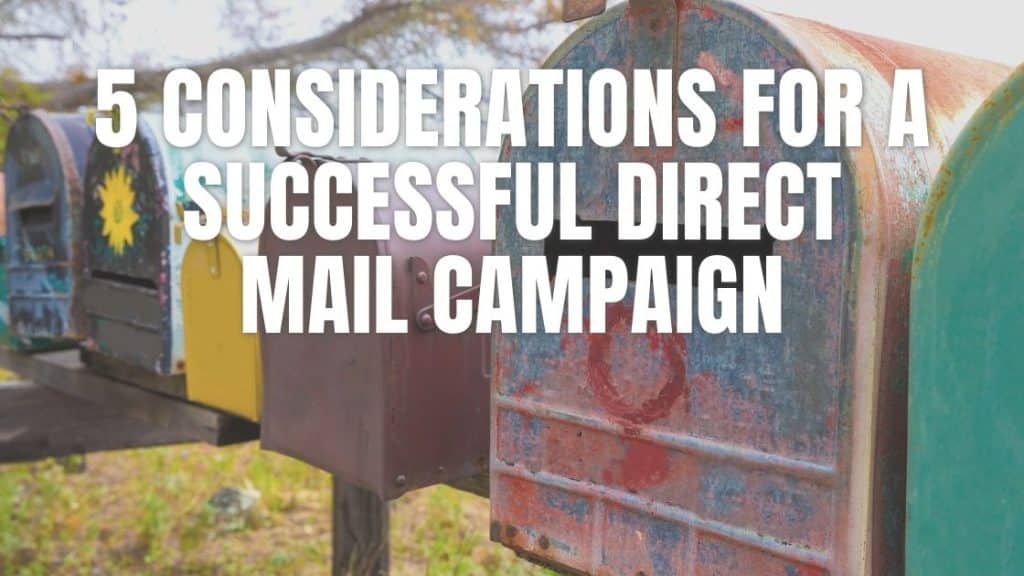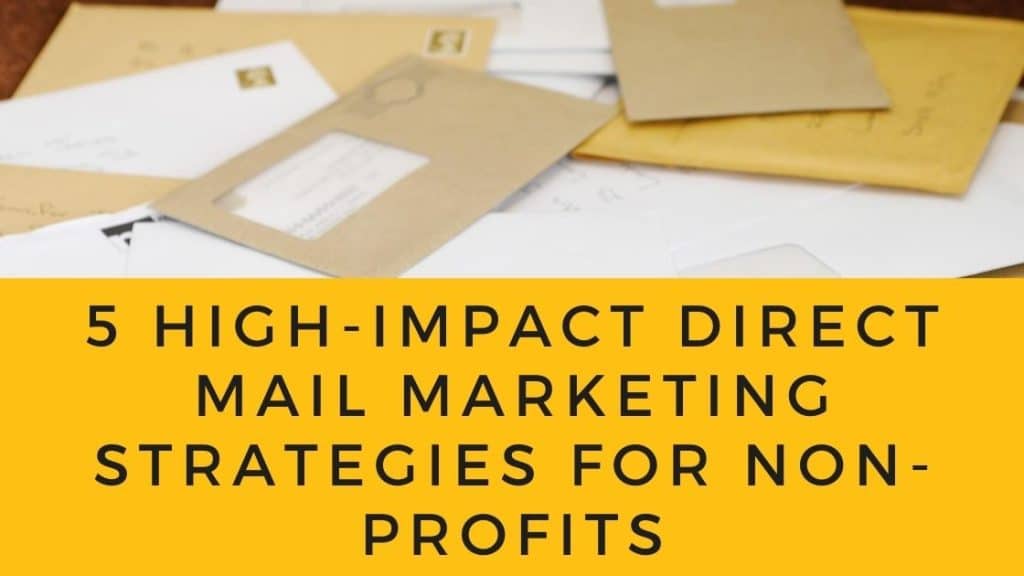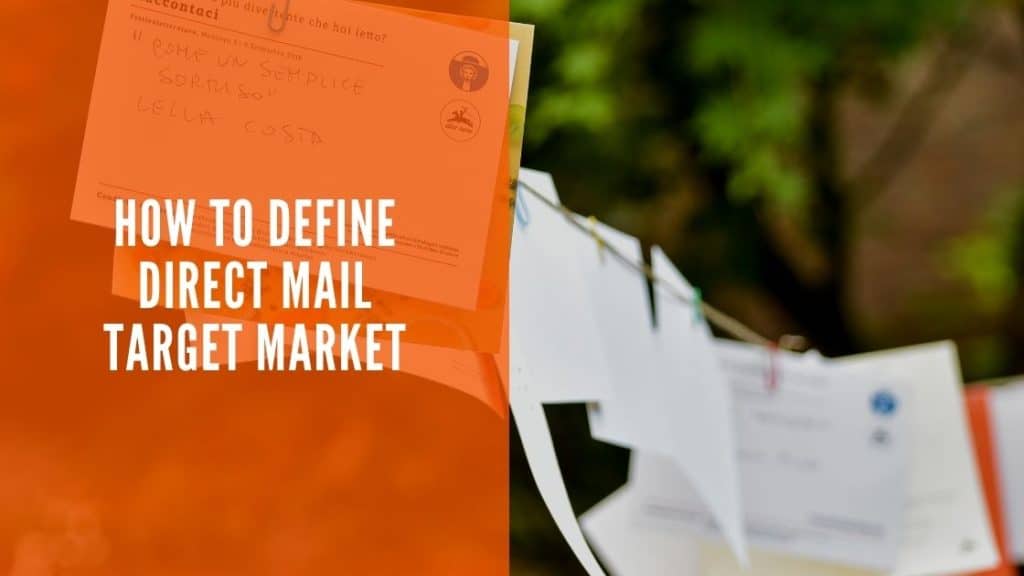Watch Episode:
Episode Transcript & Audio Only:
IMPORTANT NOTE: This transcript has been provided by an AI speech-to-text program. There may be some discrepancies between what was said and what this transcript shows.
[00:00:10] Hello everyone welcome to episode 2 of Ink & Bytes one to one marketing tips for marketing professionals. My name is Andrew Glover I am the host of Ink & Bytes a little bit of background about me. I’ve got 10 plus years of tactical and strategic marketing background this everything from digital marketing emerging marketing techniques with VR/AR and for the last three years I have been working in direct mail and direct response marketing. So I hope to share a little bit about what I do and hopefully give you some ideas and tips to improve your marketing skill set. [00:00:46]
[00:00:49] Today’s episode is talking about the prospect list and specifically about building a prospect list. So in their 2018 State of the inbound report the market research firm and CRM and platform specialist HubSpot found that customer acquisition was one of the leading marketing priorities for marketing and sales departments for the next 12 months. So this makes sense right. You have to have money coming in and that that doesn’t matter whether it’s a for profit organization versus a non-profit organization you have to have money coming in and you have to have money specifically coming in from new sources. You can’t just rest on their laurels and just expect your current customer set your current donor set to be paying and building your organization. So you need a prospecting pool to be able to do that and to grow lead generation activities. There’s lots of ways to grow and lots of strategies for customer acquisition and you know you can do CPC you can do social media inbound marketing which is HubSpot deal. There’s lots of ways to build customer acquisition. One that we’re talking about today specifically though relates to the data side and building a prospecting list whether that’s on the email and digital marketing side or whether that’s in the direct mail side. [00:02:23]
[00:02:24] So let’s get a few definition of terms out of the way. What is a prospecting list? A prospect list, in its absolute most simple terms is a directory of potential clients or donors who can benefit from the products or services of a business or who align with the values of a nonprofit. Again this I’m trying to kind of group marketing activities both within the confines of for profit and nonprofit organizations. So that’s kind of the most simplistic term. These are people who have not met the the threshold to be considered a customer donor already who they generally haven’t had any other contact with the organization no formal contact in a way they may have the familiarity with your brand and they may even have certain attributes that align with your brand but they haven’t taken whatever steps it is to convert to a customer. So there’s lots of ways to build a prospecting list and we’re going to get into those next. So data, data everywhere one of the first things you have to kind of figure out is what type of prospecting list you have. There are lots of different ways to prospect and there’s lots of different prospecting lists. And it’s really based off of where data is who owns the data that and how much data you have. So let’s start with the most simple terms IPs and cookies. These are people who who maybe have visited your Web site and they leaving digital trace of themselves on your Web site. So every user every consumer every donor anybody who visits the website leaves an IP on your Web site and they visit the website through a web browser. They leave what’s known as a cookie. [00:04:26]
[00:04:26] You can use these kind of nuggets, believe it or not, for pretty tremendous remarketing and prospecting. Even if they left no other information other than their digital fingerprint for lack of a better terms. So how can you use this collect your eyepiece know log those IP as you need to have data privacy notices in place and that’s definitely the topic of another another marketing video that I am playing in the future but use this information collects IP addresses place cookies on their browsers. And now you have a database of user IP and user cookies that you can then set up marketing activities against those that can be matching IPs to addresses which is really popular for direct mail. You know someone visited the IP see if you have an address or can match that IP address to a physical location and mail them something you have cookies you can do things like remarketing and all of these things are you know you don’t know the consumer’s name you don’t know their email address but you do know that they have interest and there are ways to do it. So that’s the first type of prospecting list is the IP is in cookies list. The next is an email list. Typically again you need to comply with can-spam laws and all that all the rules and regulations around this again. That’s outside the purview of this. I’m talking about just the prospect list your email list or people that you might not have a lot of information on. Maybe they left their e-mail or gave their email as a part of a list that you have maybe an event list maybe they they signed up for something on your Web say whatever it is you have their e-mail and their first name or their e-mail their last name or something. [00:06:10]
[00:06:11] Save that email list and then get them into a well crafted e-mail campaign using your prospecting data their next kind of list as a social media followers list you can track people based off of their social media presence whether it’s Facebook whether that’s Twitter Instagram whatever it is engage with these people get them into your CRM so that you can track and figure out OK who is your most engaged social media user and what are ways that you can reach out to those social media users to get them to better promote your cause. The next one is direct mail direct mail is not dead guys direct mail is really powerful because well for a lot of reasons but one of the biggest reasons is that digitally everybody is saturated. You know you see hundreds if not thousands of ads on your computer and your email box that you just ignore. But the honest truth is is the mailbox is still a fairly sacred place. And you might get junk mail you might get spam but you’re getting five or six things in your mailbox versus thousands of digital solicitations. So leverage direct mail again that’s kind of I have a future series within Ink & Bytes that I plan to get into direct mail. But your direct mail needs to have things like your user name or your mailing address of course. And then as much information that you can use from for 1-to-1 marketing purposes which was Episode 1 go back and check that video out. And then there’s offline sources for data. Those are people who attended events. Those are prospects are just peer relationships and things like that. So all sorts of different offline data options as well so the next question then is now you know the types of prospecting lists. [00:07:58]
[00:08:01] Where do you get those prospecting names. There’s lots of ways. The first waves through your direct sources. Those are places you have direct control over things like logging those IP addresses and leveraging cookies on your Web site. Another way to get emails is offer free content in exchange for user information. That’s called an inbound marketing strategy. Exit intent pop up. Maybe no one likes to be popped up but there if you set up what’s called an exit intent pop up screen that detects when the users about the session pop in a request up and offer them something on that pop up. If they leave their email address and then of course you have contacts in other channels there’s a lot of other channels and leverage or other channels beyond just your Web site. So those are some of your direct sources. You have also have a variety of indirect sources those indirect sources can can be things like social media you know as much as you like to say that the social media is your brand technically social media it lives on Facebook and Facebook doesn’t share all that information with you as much as we’d like them to. You know you also have a huge database of volunteers donors stakeholders ask them to submit you know ask them to submit their their requests and their information to friends that they think might be interested in becoming a prospect again POS systems, other channels systems and then a huge thing for indirect sources is thought leadership. These are people who present at conferences these are people who write quality blog posts and webinars and anybody who who contributes to the industry and through those contributions is able to grow your network. So you’re your direct sources is is leveraging the information you have your indirect sources is about growing your network. [00:09:59]
[00:10:00] And then one of the final ways to get prospecting names is to find outside sources. Again you have to be careful with this especially digitally but there are things like purchase lists. This is easier and direct mail when you can purchase and target direct mail and then send that out there’s not as many rules right this second governing the the acquisition and purchase and rentals of lead generation source lists. There are ways on the digital end to do this that do comply with canned Spam rules. One of the best ways is being creative with code branded partnerships. See if a partner brand or a partner organization is willing to send out one of your email newsletters to their lists to to drum up interest from their prospect or their customer or their donor pools at promoting new product and vice versa. One of the other really cool things with digital is that you can actually place things like your URL parameters and all sorts of different tracking things so that if a consumer clicks on one of those links in a chrome co branded email you can get them quickly into your CRM system. So really cool things. So I just need to wrap this up here. [00:11:21]
[00:11:22] Again as usual all over time. So this summarize the most important thing here is avoid still prospecting lists you’re prospecting this should never be static it’s always be cleaning it for inactive nonresponsive records and always be adding new names to it. If you’re prospecting this go still you really lose out on a lot of new customer acquisition lists. [00:11:45]
[00:11:46] So thank you for taking the time to listen today. We talked about building a prospecting list and also a huge thank you to Valtim Marketing Solutions who is sponsoring this webinar series Valtim Marketing has been a direct response marketer for 30 plus years. They work in just about every major integrated vertical of the marketing chain from direct mail, call center, fulfillment, third party logistics, email, creative, you name it. They work with about two and a half million data records per month have it print capacity of sixty five thousand pieces per hour and across everything ninety nine point eight percent accuracy. Have a great day guys. Thank you. [00:11:46]



